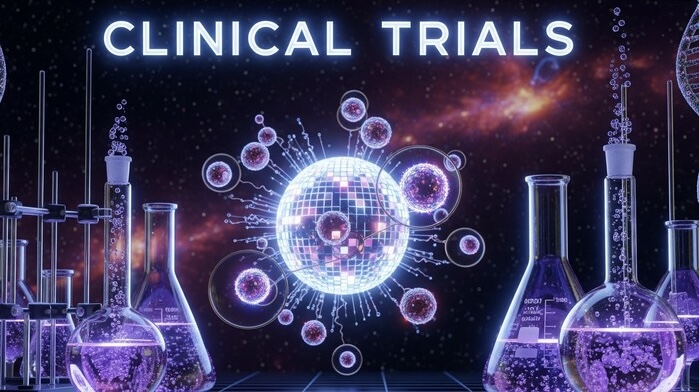
A fix for Parkinson’s Disease is on the way. Keep fighting!
How New Treatments Are Tested
Clinical trials are research studies in humans that assess the safety and effectiveness of new treatments. They progress through three phases: Phase 1 tests safety in a small group, Phase 2 evaluates effectiveness and side effects, and Phase 3 confirms results in a larger population. If successful, the treatment may be approved for market use.
Phase 1/2 Studies
Phase 1/2 trials combine safety (Phase 1) and preliminary efficacy (Phase 2) assessments. Successful trials, like those for bemdaneprocel, may advance to Phase 3 to further evaluate efficacy and safety.
Phase 3 Studies
Phase 3 trials confirm efficacy and monitor side effects in larger patient populations. Building on Phase 1/2 results, these trials compare the new treatment to standard care, helping determine if it should be approved for widespread use.
If Phase 3 is conclusive, meaning the treatment shows strong efficacy and acceptable safety, the sponsoring company can submit a marketing authorization application to regulatory agencies (like the FDA in the U.S. or EMA in Europe).
If approved, the treatment can then be marketed and prescribed to the general public. This is the final step before widespread clinical use—turning a promising therapy into a real-world option for patients.
Time to Market
| Step | Time |
|---|---|
| Preclinical | 1–2 years |
| Phase 1 | ~1 year |
| Phase 2 | ~1–2 years |
| Phase 3 | ~2–4 years |
| Regulatory Review | ~6–12 months |
| Total | ~6–10 years |
Find Trials
ClinicalTrials.gov: Search for worldwide stem cell trials for Parkinson’s disease (recruiting). Search Trials
Fox Trial Finder: Connect with Parkinson’s research studies based on location and health history. Find a Trial
Be Part of Research - NIHR HNS UK: Current Studies relating to Parkinson's disease. See Ongoing Trials
UX-DA001 Study: Phase 1 exploratory study of UX-DA001, a cell therapy using patient-derived cells to improve motor function. Explore Study
Some Ongoing Trials
| Organization | Treatment(s) | Status |
|---|---|---|
| BlueRock Therapeutics | Bemdaneprocel (iPSC-derived dopaminergic neurons) | Entering Phase 3 |
| Kyoto University Hospital | Tacrolimus + iPSC-derived dopaminergic progenitors | Phase 3 (Suspended) * |
| Aspen Neuroscience | ANPD001 (autologous iPSC-derived dopamine neurons) | Phase 1/2a (Ongoing) |
| Sumitomo Pharma / CiRA | CT1-DAP001 (allogeneic dopaminergic progenitor cells) | Phase 1/2 (US & Japan) |
| iRegene Therapeutics | NouvNeu001 (iPSC-derived neurons for early-onset Parkinson’s) | Phase 1/2 (China & US) |
| S. Biomedics | TED-A9 (hESC-derived dopaminergic progenitors) | Phase 1/2a (Korea) |
| Novo Nordisk / Lund University | NN-9001 (iPSC-derived therapy) | Phase 1 |
| XellSmart Biomedical | XS-411 (allogeneic dopaminergic neural progenitors) | Phase 1 (China & US) |
| Oryon Cell Therapies | Autologous iPSC-derived dopamine neurons | Phase 1 (US) |
| Shanghai Yuesai Biotech | UX-DA001 (autologous iPSC-derived therapy) | Entering Phase 1 (China) |
| iCamuno Biotherapeutics | ICA07 (autologous iPSC-derived dopamine progenitors) | Phase 1 (China) |
| TreeFrog Therapeutics | TFG 001 (iPSC-derived therapy) | Preclinical (Phase 1 planned for 2027) |
| Kenai Therapeutics | RNDP-001 (iPSC-derived dopamine progenitors) | Preclinical (IND planned) |
* The Kyoto University Phase 3 trial involving iPSC-derived dopaminergic progenitor cells and tacrolimus was suspended due to logistical and regulatory adjustments, not safety concerns. The trial had shown promising early results: no serious adverse events, stable graft integration, and improved motor function in several participants.
However, the suspension appears to be temporary and related to transitioning from an investigator-initiated study to a broader, possibly multi-center trial framework. The team, led by Professor Jun Takahashi at CiRA, is reportedly preparing for future trials with expanded scope and international collaboration.